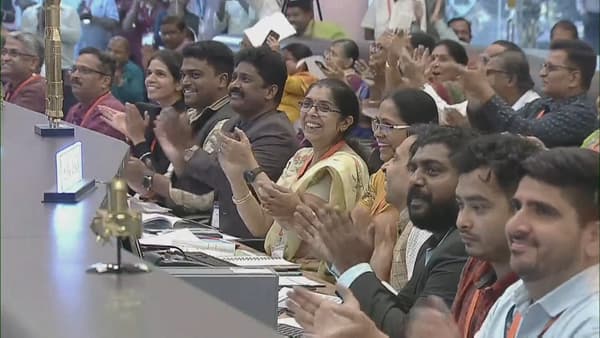India has successfully landed its rocket on the moon, the Indian space agency announced on Wednesday. Chandrayaan-3, which means “moon ship” in Sanskrit, landed near the lunar South Pole, an area little explored.
Four years after a failed attempt, the world’s most populous country joins the United States and Russia among the nations that have achieved a controlled moon landing, a very closed club that now positions India as a great space power.
The success of India’s burgeoning program comes four days after the failed landing of Russia’s Luna-25 probe, the first probe launched by Russia to the moon since 1976, which crashed on our satellite.

Developed by the Indian Space Research Organization (ISRO), Chandrayaan-3 includes a lander called Vikram, which means “courage” in Sanskrit, and a mobile robot, called Pragyan (Sanskrit for “wisdom”) to explore the surface of Moon.
upcoming lunar exploration
Chandrayaan-3, launched six weeks ago, took longer to reach the Moon than the manned US Apollo missions of the 1960s and 1970s, which got there in a matter of days.
In fact, the Indian rocket is much less powerful than the Saturn V, the rocket for the US lunar program. It had to make five or six elliptical orbits around the Earth to gain speed, before being sent on a lunar trajectory that would last a month.
Vikram detached from its propulsion module last week and has been transmitting images of the Moon’s surface since it entered lunar orbit on August 5. The solar-powered rover will now explore the surface and transmit data back to Earth for two weeks.
Source: BFM TV

